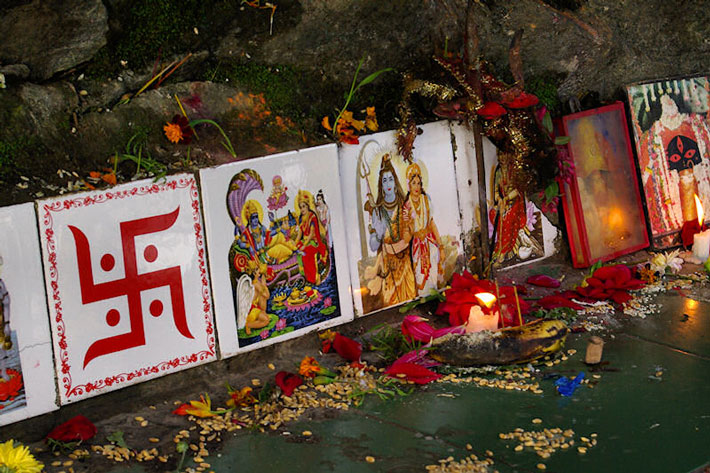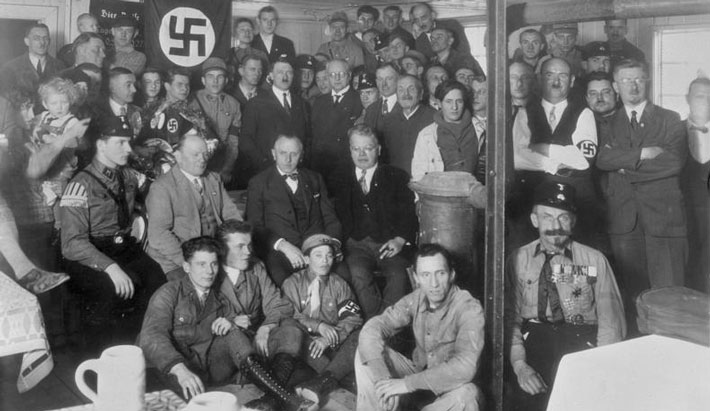I look at a lot of Japan-related websites in my spare time (for hopefully obvious reasons), and every now and then I'll see a post like this:

And it's not just Japan-specific sites where people ask these questions; you can find them on general question sites like Yahoo! Answers too.
A lot of people, when they see a swastika, immediately think of the Nazis. I don't really blame them; World War II and Nazi Germany tend to get a ton attention in popular media (I'm looking at you, History Channel).
But in Japan (and most of Asia), the swastika doesn't stand for the Nazis or anti-Semitism or any of that awful stuff.
Where Does the Swastika Come From?
The swastika has been used in tons of different cultures all over the world for tens of thousands of years. It just seems to be one of those simple, geometric symbols that developed independently in different places and times throughout history.
The swastika was usually used in a religious or cultural way. Native American tribes (like the Navajo) used the swastika in healing rituals. In European history, the symbol was associated with Norse gods like Thor and Odin. And in Asia, the symbol had strong ties to Hinduism and Buddhism.

The name "swastika" itself is from the Sanskrit word स्वस्तिक, which basically translates to "lucky charm" (not to be confused with the delicious breakfast cereal).
For most of human history, the swastika stood as a holy, positive symbol. Then, the Nazis came along.
Nazis and the Swastika
During their time, the Nazis plundered and appropriated lots of imagery from different cultures for their own purposes. This included not only the swastika (which they thought stood for Aryan pride), but symbols from Norse, German, Celtic, and other European cultures.

The nazis specifically used the symbol with the prongs facing right, and in many cases tilted it to look like it was spinning. The symbols you'll see in Japan are almost always facing to the left. If you have trouble remembering which is which, just think (Left = Love, Right = Reich).
With all the horrific things that the Nazis did, it became hard not to associate the swastika with the Nazi's brand of terror and hate. After all, the Nazis adopted the swastika on their flag and plastered it over anything you can think of – cars, banners, uniforms, arm bands, and so on.
It's kind of amazing, really – in less than 30 years, the Nazis transformed a symbol that had been around for thousands of years from something positive to something negative. And because of that influence, in countries like the United States in particular, neo-nazis and the KKK still use it as a symbol of hate and intolerance.
What Does The Swastika Mean In Japan?
In Japan, the swastika is called manji. when you type out the word on your computer, chances are the swastika symbol will come up (卍). The manji doesn't have the kind of stigma in Japan as it does in the West, and is used pretty frequently in Buddhist tradition.
In fact, if you look at a city in Japan on Google Maps – especially older cities like Kyoto or Nara – you'll see lots of manji markings where Buddhist temples are located.

The swastika, in the Japanese sense, can mean a number of positive things from strength to compassion.
The bottom line is that when you see a swastika in Japan, it's not some anti-Semitic symbol; it's usually used as a positive symbol of Buddhism. I definitely understand why the swastika has such an incredibly negative connotation in the West, but the thousands of years of history that Japan has with the swastika overrides the awful associations that much of the Western world has with it.
Update: With the coming of the 2020 Tokyo Olympics, Japan has decided to update the manji symbol, as well as a number of others, to be more tourist friendly. Buddhist temples will be represented by a tiered pagoda. Read more about the change over here.
